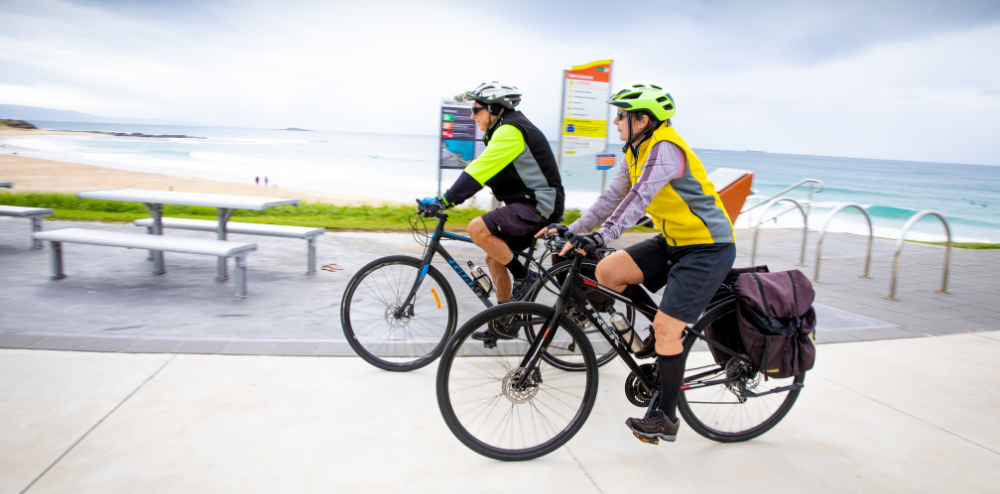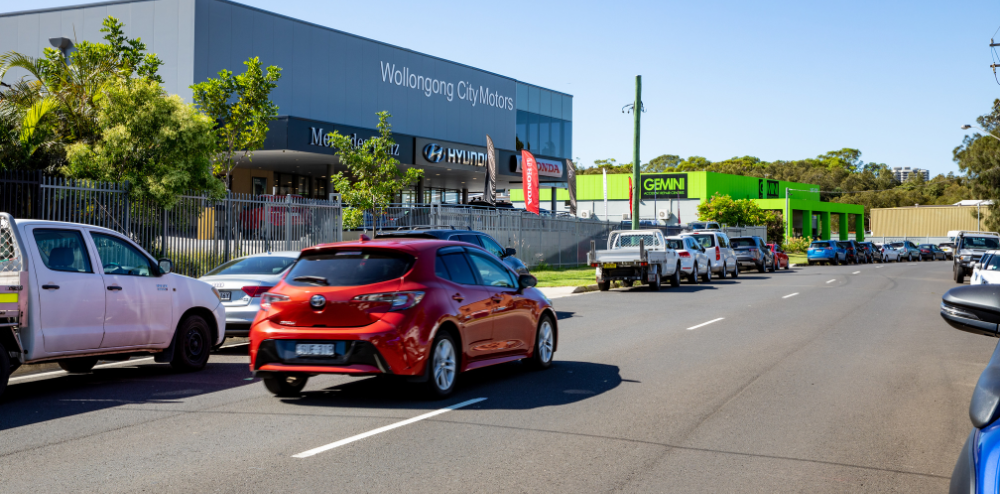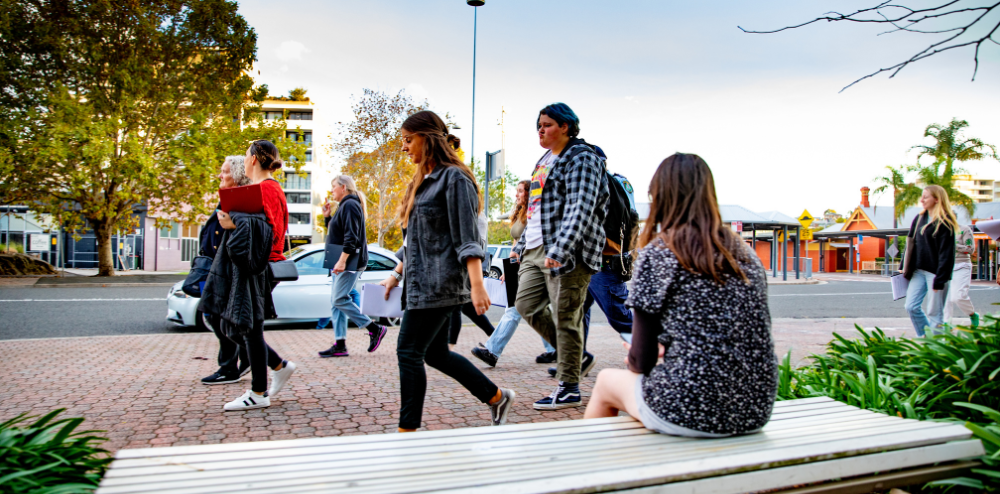Fast Five: facts about how we travel – and why we need to change
Did you know 79 per cent of trips around Wollongong are by car? Our draft Wollongong Integrated Transport Strategy has put a microscope on our travel behaviours and is asking us to work together for a better future.
The draft Strategy outlines goals and actions that can help build a sustainable, affordable, and accessible transport network to support a growing population.
It puts forward a case for change, as without intervention we’ll see significant costs for our community from cars on our roads, congestion, longer journey times and environmental impacts. For example, by 2036 we’ll see 13,000 more car trips in our city’s centre and a 21 per cent increase in delay hours across Wollongong during morning peak hour.
Now is your chance to help us shape our draft Wollongong Integrated Transport Strategy. Drop-in and chat to our transport planners and engineers about how we’re planning better walking, cycling, public transport and driving options across the Wollongong area,
The next drop-in session will be held on Thursday 23 May from 3-6pm at the Thirroul Community Centre – Escarpment Room.
In the meantime, here are five more facts and figures* about how we travel and ways the strategy address it for our future.
For more information and to provide feedback please visit Our Wollongong website. The exhibition closes on Monday 27 May 2024.
1. For short trips most people are travelling by car

For trips under 1km, 55% are by car and for trips between 1-2km 82% are driven. We want to work together so that people are choosing to leave the car at home for shorter journeys.
One of our goals (Goal 5) is to increase the use of active modes of transport. We’ll continue to improve infrastructure to support active journeys, short or long, like creating cooler walking environments and inclusive pedestrian crossings. Every travel makes a difference, so this will help encourage people to walk or cycle for short trips.
2. Every day, around 21,500 people outside of Wollongong are travelling into the city for work

The majority (85 per cent) of this group are coming from the south, with Shellharbour being the highest (71 per cent). It shows many people are driving to work, and with a growing workforce, this will see an increase of private vehicles during peak hours. Currently, car use accounts for 96 per cent of commutes for our residents.

One way our strategy addresses commutes, is to have competitive public transport (Goal #1). We’ll continue our advocacy work for better public transport options that has high standards, including improving route coverage, frequency, and travel time. It will make public transport a viable option for commuters.
3. The second highest reason why we travel around Wollongong is for our passengers

Around 20 per cent of our movements is to serve our passenger, which often means an adult dropping off a child. This is an opportunity to further create a child-friendly transport system.
This means supporting environments where our younger members are comfortable in catching public transport, walking, or cycling to their locations. One focus area is to continue our work around road safety at schools. This includes education on travel behaviours as well as infrastructure improvements. This aligns with Goal 4 for all ages and abilities to get around with ease (Goal #4)
4. If you live in the West Dapto area, on average your household has more than three cars

There is higher car ownership in the southern suburbs compared to our northern suburbs and the city centre. One of the challenges identified is that disconnected suburbs in terms of public and active transport creates a reliance on cars.
This leans into Goal (#2) that every day needs are within 15 minutes. With our growing southern suburbs, we want to improve and build infrastructure that can provide better connected networks that are not reliant on cars.
5. Around 16 per cent people are walking for their travels, so let’s increase it!

We all know walking brings many health, economic and environment benefits – it’s a free transport mode that does not create congestion on our roads.
So, we’re continuing our plans to support an active city with our goal #3 being for sustainable transport options. Walking can be sustained now and into the future – as well as public transport and cycling. We’ll continue our efforts in educating our community on the array of benefits of active transport. We’ll also build on our existing footpaths and shared paths for longer connected routes.
*Facts and Figures are from the draft Wollongong Integrated Transport Strategy.
Want more Council news?
Visit our News page to find out what's happening in your community, or sign up for e-news.
